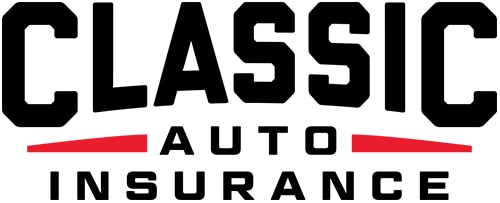Seals come in many organic materials, including O-rings, gaskets, and lip seals, natural rubber grades, each serving a purpose.
Causes of Rubber Seal Deterioration
Environmental Factors: Lightly weathered rubber seals are susceptible to deterioration due to environmental factors and heavy usage. Prolonged exposure to UV light can cause the lightly weathered seals to crack. Temperature fluctuations and humidity also contribute to the gradual degrading effect on the well weathered rubber seals.
Chemical Exposure: Seals come into contact with chemicals such as oils, solvents, and industrial fluids. These substances can break down the rubber material, leading to a weakened or damaged seal. For example, hydraulic fluid can have a damaging effect.
Physical Wear and Tear: Over time, the seals experience labour intensive physical wear and tear. Friction and abrasion from regular use can cause the rubber to wear down, affecting its sealing capabilities. Compression set, which occurs when the rubber is permanently deformed under affecting pressure, is another common issue.
How to Identify Worn or Damaged Rubber Seals
Visual Inspection: The first step in identifying damaged seals is a visual inspection. Look for signs of cracks, splits, and discoloration. Weathered or damaged seals will often exhibit visible signs of aging, such as brittleness.
Functional Issues: If a rubber solvent seal is not performing correctly, it’s time for reconditioning. Signs of issues with rubber solvent include loss of flexibility, reduced sealing performance, and the presence of leaks.
Regular Maintenance Checks: Performing maintenance checks helps you catch potential problems early. Schedule inspections to ensure that your seals remain in good condition.
Steps to Take Before Reconditioning Seals
Gathering Tools: Before you restore damaged rubber seals, you’ll need cleaning agents, such as mild soap, abrasive file, paraffin wax, abrasive emery cloth, cotton cloth diluted bleach, and conditioning products like rubber conditioners or rubber conditioner.
Safety Precautions: When handling chemicals and cleaning agents, it’s essential to take safety precautions. Wear protective gear, such as gloves and goggles, to protect yourself. Safety and having the right tools should be a priority when working with chemicals.
Cleaning: Start the reconditioning process by cleaning the seals thoroughly. Use warm water and soap to remove excess dirt. If the previous method doesn’t work, a completely saturated diluted bleach mix will work for the entire seal.
Step-by-Step Guide to Reconditioning Seals
Applying a Rubber Conditioner: Once the rubber seal is clean, apply a rubber conditioner. Suitable conditioners can be found at most hardware stores. Apply the conditioner across the surface of the rubber seal using a dry cotton cloth. The conditioner helps restore elasticity to the rubber.
Restoring Flexibility and Elasticity: Allow the conditioner to absorb into the rubber. This process takes hours, depending on the most suitable conditioner amount of the seal. Restoring flexibility is crucial for the seal to perform. Reapply the excess conditioner, if necessary.
Reinstalling the Seals: After conditioning, reinstall the seals properly. Ensure they are positioned correctly and fitted tightly to prevent leaks. Proper installation is essential to the functionality of rubber parts in the seals and to prevent future wear.
Tips for Prolonging the Life of Reconditioned Rubber Seals
Regular Inspection: Maintaining reconditioned seals involves regular cleaning and inspection. Use mild soap and warm water for routine cleaning. Regular inspections helps you identify any potential issues, allowing you to address them promptly.
Protecting Against Environmental Damage: To protect against environmental damage when restoring seals, use UV protection and manage the temperature and humidity of the environment. These steps will help prolong the definite shelf life of your seals.
Avoiding Chemical Exposure: Minimize the exposure of your seals to harmful chemicals. Use protective coatings and handle solvents and oils carefully to prevent damage. Avoiding chemical exposure is key to maintaining the integrity of the seals.
When to Replace Seals Instead of Reconditioning
Severe Damage and Wear: Reconditioning the rubber part may not be sufficient to restore damaged rubber seals. If the rubber seal is severely damaged, replacement may be necessary. Signs of severe damage include deep cracks, significant loss of elasticity, and structural failure.
Cost Considerations: Consider the cost of reconditioning versus replacement. While reconditioning can extend the life of a rubber seal, it may not always be the most cost-effective solution. Weigh the costs and benefits to make an informed decision.
Availability of Replacement Seals: If replacement is the best option, ensure that suitable replacement seals are available. Many hardware stores offer a variety of seals, or you may need to source custom-made seals for specific applications.
Reconditioning seals extends the life of these essential components. By understanding the causes of deterioration and following the outlined steps, you can effectively restore and maintain shelf life of your seals. Regular maintenance will ensure that your seals remain in top condition, providing reliable performance for years to come.
Common Questions About Reconditioning Seals
How often should seals be reconditioned? The frequency of reconditioning depends on the seal’s usage and environmental exposure. Regular inspections determine when reconditioning is needed.
What are the best products for reconditioning rubber seals? Products such as almond oil rubber conditioner, almond oil rubber solvent, and commercial rubber conditioners are effective.
How long does the reconditioning process take? Restoring damaged seals takes several hours to a few days, depending on the condition of the seals, the rubber ages, and your rubber restoring techniques.
Are there any risks involved in reconditioning seals? When done restoring damaged seals, reconditioning poses minimal risks. Always follow safety guidelines and use protective wear to avoid potentially catastrophic consequences.
Ask Classic Auto Insurance About Restoring Rubber Seals
If you’re passionate about classic cars, join the thriving community of enthusiasts. We have classic car pros who make you the ideal insurance plan for your new car based on your personal preference. Call us at 888-901-1338.





